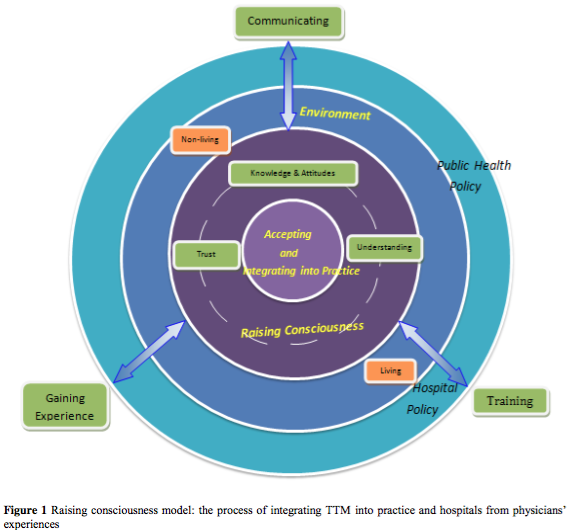
Integration of Thai traditional medicine into physicians' practice part 2: Raising consciousness, the process of integration from physicians' experiences
Abstract
Full Text:
57-63:PDFReferences
V. Chokevivat, A. Chuthaputti and P. Khumtrakul. The use of traditional medicine in the Thai health care system: Regional consultation on development of traditional medicine in the South East Asia region. Pyongyang, the Democratic People's Republic of Korea; 2005.
S. Srisombat. The study of knowledge attitudes and behaviors of health workers and drug districts and rural people: Nakhon Phanom province. Status and direction of research of Thai traditional medicine. Bangkok: World Relief Organization veterans; 1985. p. 252.
N. Virasombat. The model development of the integration of Thai traditional medicine to the health care system: Nakhon Ratchasima hospital. Status and trends in biomedical research Thailand. London: Hodder was relief military hardware to the war; 1996. p. 158.
The National Statistical Office. Report on the survey of health and welfare 2544. London: Office of the Prime Minister; 2001.
Y. Mankrathok. The attitude of the hospital director and head of the pharmaceutical community with a blend of Thai herbal health care system: community hospitals in the Northeast. The status and direction of research, medicine, Thailand, Bangkok: World War Veterans Organization; 1996. p. 336.
S. Wankaew. Concession to the integration of Thai traditional medicine in the government public health service of medical and publichealth administrators in the three Southern border provinces [Thesis]. Prince of Songkhla University, Pattani; 2007. p. 99-100.
P. Phetrakart and J. Limpananon. The integration of Thai traditional medicine: the situation of Thai traditional medicine data centre strategy. Department for Development of Thai Traditional and Alternative Medicine: Usa printing; 2008.
Department for development of Thai Traditional and Alternative Medicine. Policy and strategy development of Thai traditional medicine, folk medicine and alternative medicine [online]. 2008 Available from: URL: http://www.khaolaor.asia/news/hn_preview.php?id=H00051
N. Virasombat, W. Prokobkij, T. Tunthaworn, P. Riyachan, M. Sudto and M. Ouaysawat. Herbal medicine usage in current health service system: A case study of Sung Noen contracting Unit of Primary Care- CUP: Nakhon Ratchasima Province. JTTAM; 2011. p. 9.
D.M. Eisenberg, R.C. Kessler, C. Foster, F.E. Norlock, D.R. Calkins and T.L. Delbanco. Unconventional medicine in the United States: prevalence, cost and patterns of use. N Engl J Med. 1993 Jan 28; 328 (4): 246-52.
B.G. Glaser and A.L. Strauss. The discovery of grounded theory: Strategies for qualitative research. Chicago: Aldine Publishing Co; 1967.
C.M. Clark. The restructuring of meaning: An analysis of the impact of context on transformational learning (Unpublished doctoral dissertation). Athens: University of Georgia. 1991
Refbacks
- There are currently no refbacks.

